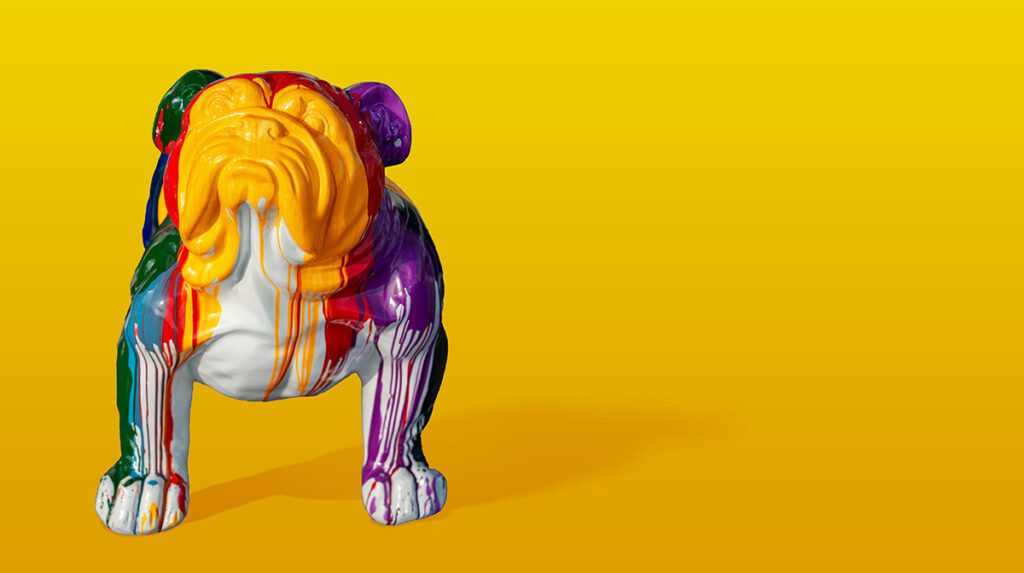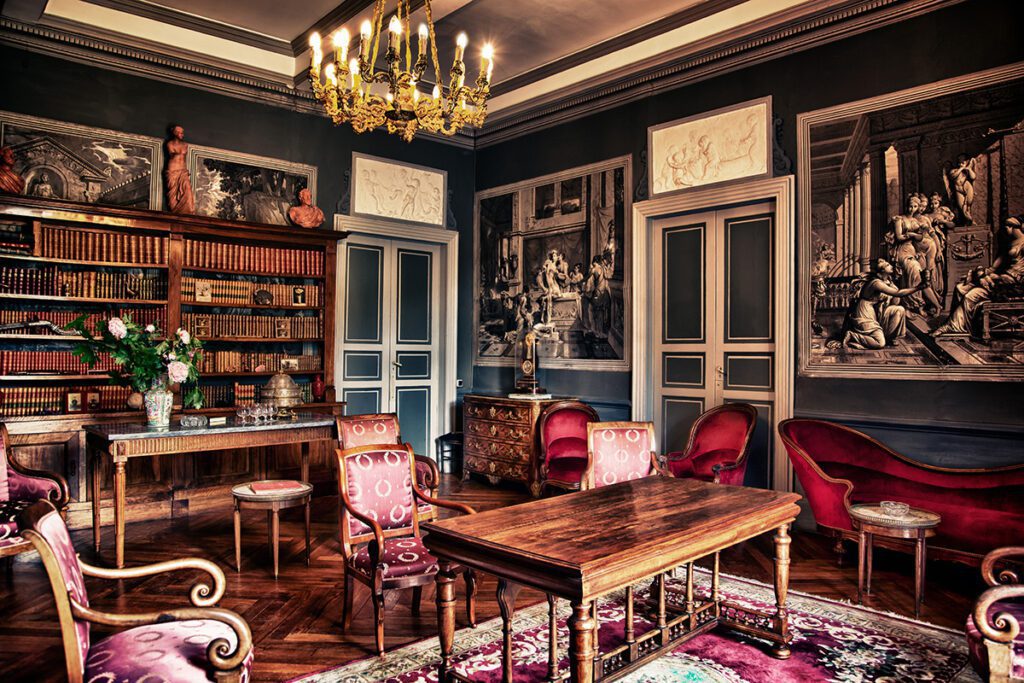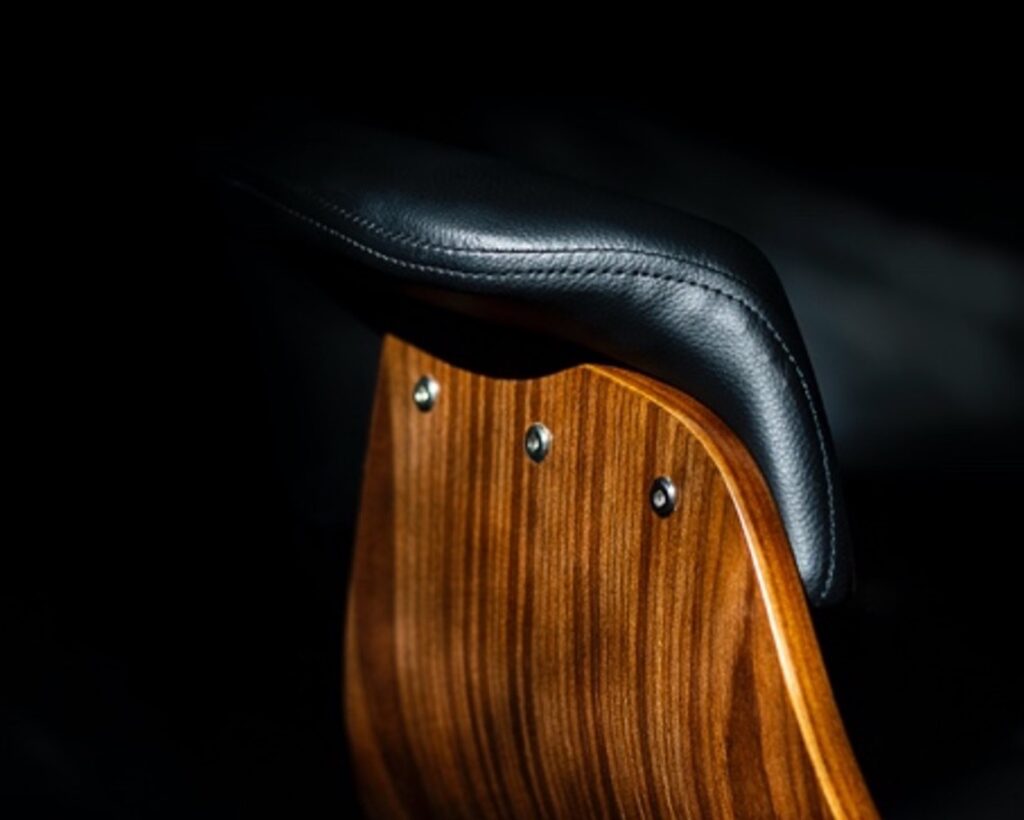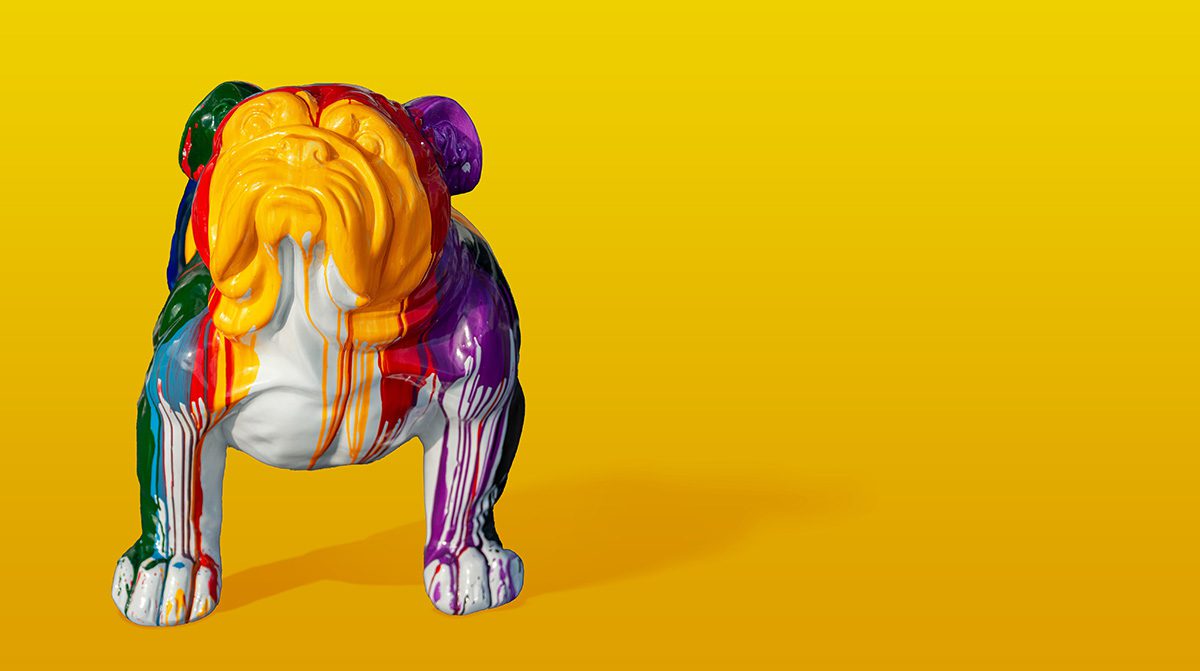This week, we look at the design and fashion world and give our take on the latest happenings and trends. We delve into why a graffiti artist encouraged his followers to shoplift (and why we get it and even kind-of support it). We explore why climate activists are pouring paint and soup over art works – is it ridiculous or is this the only way to get the message across? We also take a look at the resurgence of lovely, bold, colourful Maximalism, and finally, how vegan leather may not be all that it’s cracked up to be.
GUESS you better ask first
It’s not the first time that a big global brand has tried to steal a street artist’s design, but it’s not often that the artist is able to return the favour. Last week, the GUESS flagship store in London launched a GUESS x Brandalised project featuring some of artist Banksy’s work, such as Flower Thrower, Balloon Girl and Follow Your Dreams… without asking first.
What is interesting to note, is that in a press statement about the collection, the brand said that ‘the graffiti of Banksy has had a phenomenal influence that resonates throughout popular culture. This new capsule collection with Brandalised is a way for fashion to show its gratitude.’
It’s a funny way to show gratitude.
In response, Banksy encouraged his 11.8 million Instagram followers to engage in a little payback with the message: “Attention all shoplifters. Please go to Guess on Regents Street. They’ve helped themselves to my artwork without asking, how can it be wrong for you to do the same to their clothes?” While we can’t say we approve of shoplifting, we do figure this is an eye for an eye.
The lesson is simple: it’s better to ask for permission than forgiveness, whatever the art medium.
Climate Action: why are people throwing paint/ soup/ mashed potatoes on famous artworks?

The works of Van Gogh, Monet, Klimt and Charles Ray are just some of the victims of stunts involving mashed potatoes, soup and paint. Sweeping cities across Europe, demonstrators from a range of climate action groupsare pouring paint and food over multimillion artworks with the intention of using the subsequent spotlight to protest.
It’s some way to make a statement. But why art? After two climate activists splattered mashed potatoes on the protective glass that covers Monet’s Grainstacks at the Museum Barberini in Potsdam, Germany, one stated “People are starving. People are freezing. People are dying. We are in a climate catastrophe and all you are afraid of is tomato soup or mashed potatoes on a painting. When will you finally start to listen and stop business as usual?” The various eco groups all have slightly different goals, but the message remains the same: the climate crisis is here and if you won’t listen to us, we’ll make you.
Last week at COP27 (the United Nations Climate Change conference), it was emphasised that ‘museums are allies’, and the International Council of Museums (ICOM) echoed concerns about the potential permanent harm to collections caused by protestors. So, it’s clear that not everyone approves. We’re not fans of the eco-vandalism ourselves, but we gotta admit that it’s effective.
YES to climate action, NO to attacking art.
*In all instances no art was harmed.
THE RETURN OF MAXIMALISM

Maximalism is back and we’re loving it, baby. Move over Scandi white spaces, we’ve had enough. Maximalism – the aesthetic that makes fashion, interiors and design a spectacle – is here to bring some joy and colour back into our lives post-pandemic. The creative industry is embracing bold colour, clashing print, exaggeration and kitsch.
As Vogue describes it, ‘maximalism is about surrounding yourself with objects d’arts, mementos and curios you love’. It’s a sentiment we can get behind for so many reasons, and it can be applied to the next graphic design work you commission, the next collection of apparel or household items, or how you might approach gifting media (could this just be general gifting?). Maximalism marketing designs will attract a tribe who will follow and align with that bold, ‘go big or go home’ attitude. Powerful and daring designs are in, and if you seek trends, you might consider taking inspiration from it.
Is real leather more sustainable?

As we draw closer to Veganuary (don’t you know, we’re always 10 steps ahead in marketing) we wanted to offer a little reflection on vegan leather. It goes against all we’ve been told, but it looks like real leather may be more sustainable than the highly-pushed ‘vegan’ alternatives.
Without a doubt, a vegan planet is kinder for our climate and the single biggest way for us to reduce our environmental impact. With the rise of sustainable fashion over the last few years, a lot of brands have turned to producing vegan leather rather than the real thing. However, vegan leather can be made from sustainable materials such as pineapple, mushroom, or cactus, OR from materials like polyurethane (a type of plastic).
So unfortunately, ‘vegan’ doesn’t necessarily mean ‘environmentally friendly’ or even ‘biodegradable’. It requires more water to be produced, and in the case of PVC materials can take many centuries to breakdown. It’s also reported that the production of vegan leather has a negative impact on workers (breathing in harmful chemicals and the danger of these getting into surrounding waterways).
We’re not saying to completely avoid it next time you’re buying a new handbag, or a piece for your house, but it’s a good idea to do your research on what materials are being used and how they’re being produced. As always, the most sustainable option is to go for and wear what is already in your closet. Invest in pieces that will last you for seasons, bring you joy, AND it will help the environment.
